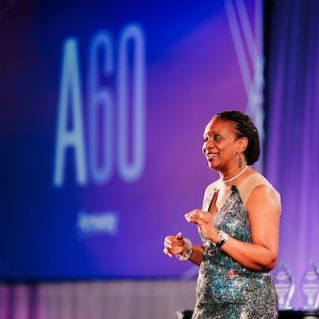Transformation is a Perpetual Process.
Nu Skin President Ryan Napierski was named the DSA Chairman at the DSA Annual Meeting in June. I recently connected with Ryan to talk about his focus and vision for his upcoming new role as well as insights on what is happening at Nu Skin.
We are a couple months from the DSA annual meeting in Austin, where you were welcomed as the new Chairman taking over from Amway’s John Parker. Could you share with us a little about what your focus and vision are going to be as the Chairman?
I’m really excited to take on this role. I’ve been participating in the executive committee along with John for the last couple of years, and we’re excited about the progress we’ve been making around selfregulation. I think reputation is a critical part of our responsibility—as an association—how we work and how we represent our industry.
As we look to the future, I want to make certain that there’s continuity between where we’ve been and where we’re going. So I developed a three ‘R’ framework of Reputation, Repositioning, and then Rejuvenation. I briefly spoke about reputation—how do we continue to improve the overall reputation? The self-regulatory movement, the Direct Selling Self-Regulatory Council, is a critical step in helping us to ensure that companies that are part of our industry—broader than just the association—understand the appropriate way of doing business. That will continue to be a key focus as we move forward in optimizing this new program to improve the reputation overall.
“Our focus is to get culture right and to continuously transform as an enterprise to win in the future.”
Share with us the second and third part of your three ‘R’ framework, Repositioning & Rejuvenation.
In addition to reputation, we need to look hard at the repositioning of our association and our industry. With all the macro trend movements we’re all familiar with—the gig economy, millennials, social, mobile—it really is a different business operating environment. It also poses a very significant opportunity for us—if we position ourselves effectively to play in it. As an association, how we provide value to our members to help us in repositioning ourselves in this new world is a key focus in adding value for our members.
The final element or the third ‘R’ is rejuvenation. This is all around ensuring that the association provides an environment for our member companies to help them be successful. Many of these companies are new. We have all different types of members from very small startup companies to very large, 50-year-old companies. Each one of those companies adds value, respectively to the association, according to what they contribute to it. I think it’s critical that our association represents their needs and provides value to every type of company. It’s also crucial that we create an environment where new companies are teaching old companies how to operate more effectively.
A lot has been talked about both in our magazine as well as the DSA’s Annual Meeting about how we compete going forward. What are we as an industry doing well as an industry, and where do we need to improve?
 What we’re doing well is we are acting very responsibly as an association. I think the moves we’ve made over the last few years—the last year in particular— are really important for the long-term viability of our industry.
What we’re doing well is we are acting very responsibly as an association. I think the moves we’ve made over the last few years—the last year in particular— are really important for the long-term viability of our industry.
As an industry, we’ve also done really well in building a community of like-minded businesses to learn and share and develop together. It’s something that I would argue is very special to the Direct Selling Association of the willingness to share with peer companies.
I think the things that we need to improve on, especially in light of what I talked about with the repositioning activities, is how do we see ourselves in the future? If we continue to see ourselves as analog lens direct sellers, then we will miss a significant opportunity that’s ahead of us with the gig economy. The broad movement to independent workforces, and the desires of millennials, and even Gen Z, who aspire to own their own business are so much greater than Gen X or the baby boomers. If we position ourselves correctly to win in those environments, I think we will do better.
At times, we continue to look at ourselves through what I would define as an analog lens rather than a digital lens—where many of our companies are not digital native companies. So it’s a much more transformational repositioning that we need to go through as an industry and as an association to capitalize on those trends.
It’s great to see that the U.S. direct selling market had 1.3 percent growth in retail sales for 2018, stopping the two-year slide. From your vantage point at Nu Skin, what did your company learn from your slight downturn in 2013-15 that allowed you to have three years of sustained growth?
We have learned a few key lessons over the course of the last two decades or so about our business. However, I think the last decade has probably been the most significant period of change for Nu Skin, at least in our 35-year history. What we have learned is that the business environment in which we operate today is dramatically different from the business environment that existed for the prior 30 years. That’s largely a result of how our distributors do the business.
The impact of social and the medium itself has significantly changed the behaviors that our sales force utilizes to build their business. You can go all the way back to the hotel meeting model, the three-way calling model, or even the party plan models of the past. Those models today are all facilitated in a totally different manner because of technology. I would argue that perhaps the greatest, most significant lesson we’ve learned over the course of the last decade is that technology, if utilized and positioned within the company correctly, can be a significant, transformational agent for the business.![]()
The second thing we’ve learned is that focusing our sales force really matters. This probably doesn’t come as any surprise—but as companies, we tend to feel that the more we do for them then the better off we will be. We still struggle with determining how much is too much versus how little is too little. I think what we’re trying to find is that sweet spot where pushing innovations to market by our sales force are at the appropriate cadence to get them aligned and moving forward directionally in a consistent manner that the company can support.
What are you laser-focused on right now as a company leading into the end of 2019, and into 2020?
We are laser-focused on our transformation as a company. Sometimes people think transformation is a one and done or something you do every 10 years. I’m laser-focused on helping our organization to recognize that transformation is a perpetual process that we must constantly be in both individually, as well as collectively as a company.
While we had an amazing year last year, with nearly 18 percent growth year over year, we recognize that to sustain growth requires perpetual transformation. That’s what I’m focusing on right now with my team.
We have the right culture and principles in place. We just rolled out a new culture construct that we call the Nu Skin Way that goes through our leadership principles around being customer obsessed and accountable, empowered, and being decisive. These are all principles that we’re now trying to ensure that we live on a day-to-day basis across the company. As we all know, the Peter Drucker quote that Culture eats strategy for breakfast is very true. So our focus is to get culture right and to continuously transform as an enterprise to win in the future.


